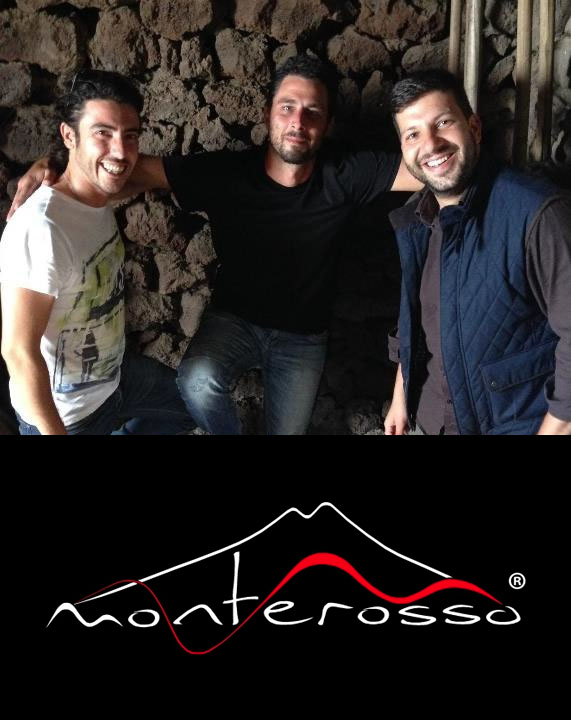
Monterosso
L’Azienda Agricola Monterosso was born when three friends, Aurelio Marconi, Giovanni Ferlito and Gianluca Strano, united by love for their land joined together. Their vineyard enjoys a unique panorama ranging from the Ionian Sea to the central crater of Etna, passing through the volcanic cones of the South-East. The philosophy that inspires the work in the vineyard is simple: a return to tradition methods, a respect for nature and creative innovation. The spiritual bond that tied our ancestors to the earth inspired them to work the vines on the ancient volcanic cone. Today, the work in organic farming allows the wine to fully express the terroir of this unique place.
The vineyards of the DOC Etna (400 and 1000 m asl) are strongly influenced by the climate which varies considerably in relation to the slope and altitude. In the lower areas, in fact, the climate is cooler and more windy than the rest of Sicily. This zone has very low temperatures in winter and highs that are never hot in summer. There is also considerable temperature fluctuation between day and night that preserves the acidity and freshness of the fruit.
The unique quality of Monterosso’s wine is closely linked to the volcanic matrix in Pozzolana Rossa (alternating layers of sand and pumice). The reddish color is due to the high concentration of ferrous elements, which give a particular flavor and minerality. Light and airy, it is a porous, crumbly pumice allows the roots of the vines to penetrate deeply and provides excellent drainage while reteing moisture deep down that guarantees the vines moisture during the drier periods. The spread of volcanic ash during explosive phenomena, acts as a natural fertilizer, a shower of energy and mineral substances such as potassium, phosphorus and manganese.
Wine production began in the 8th century BC on Etnea when Greek colonists introduced the training system known as “Alberello Egeo.” It was the preferred system of the ancient Latin populations because the arrangement of the vines was in perfect harmony with the territory and also made the most of the available land, offering each individual plant the right amount of soil and sun. Thanks to the high density of the plant (1: 1 m – 9000 plants / ha), the poor soil, the difficult environmental conditions, and the lack of water, the roots develop vertically. Furthermore the short pruning (2 buds per spur) and the equidistance of the shoulders from the trunk, about 80 cm high, allow greater concentration and a more homogeneous ripening of the bunches.
They use Qubosphera® amphora, made with the Monte Rosso pozzolana, buried like the qvevri of Georgia and inspired by Steiner’s living organic architecture, it represents the interpenetration of the Platonic solids par excellence, the cube and the sphere: symbols of static and dynamic. The external cubic structure ensures thermal inertia thanks to the thickness of the walls, favoring micro-oxygenation and giving the wine greater stability. The internal spherical shape facilitates the convective motions of the wine, allowing the mixing of fine lees.


